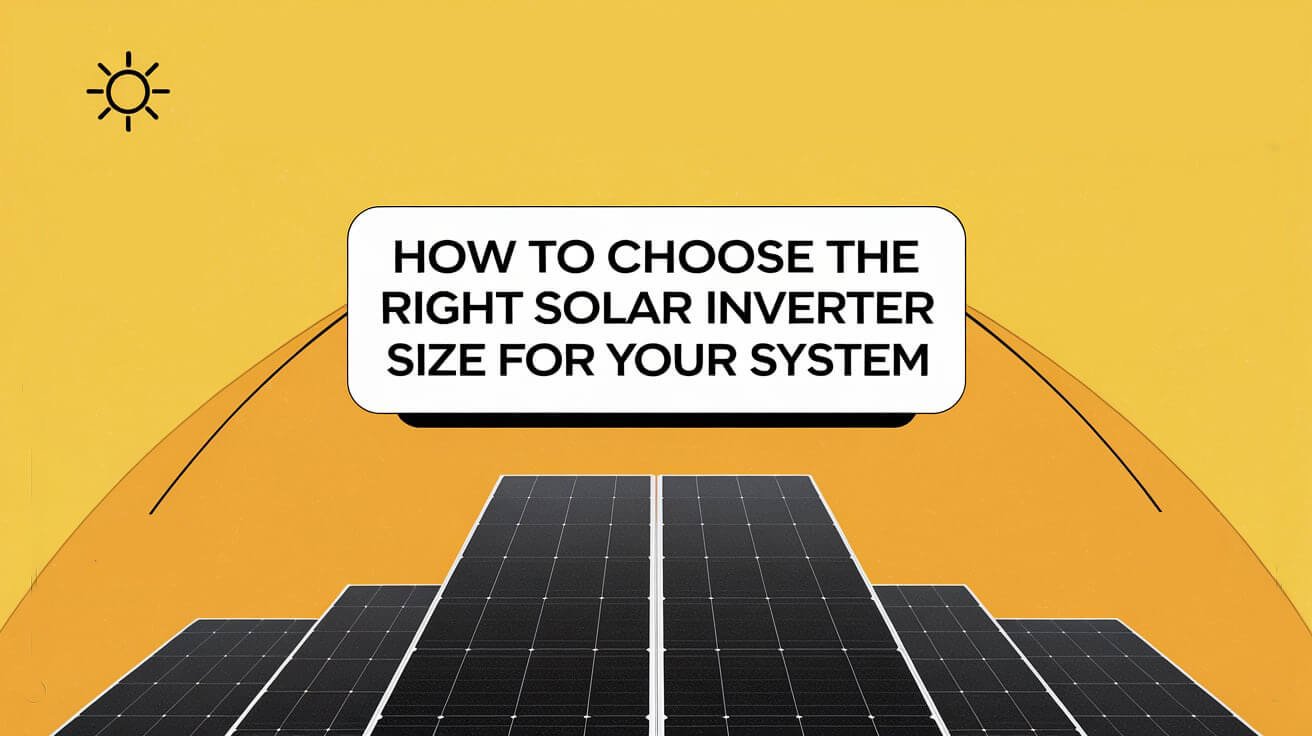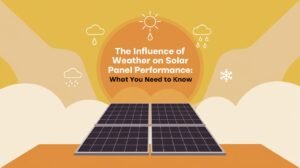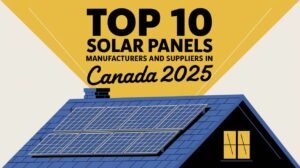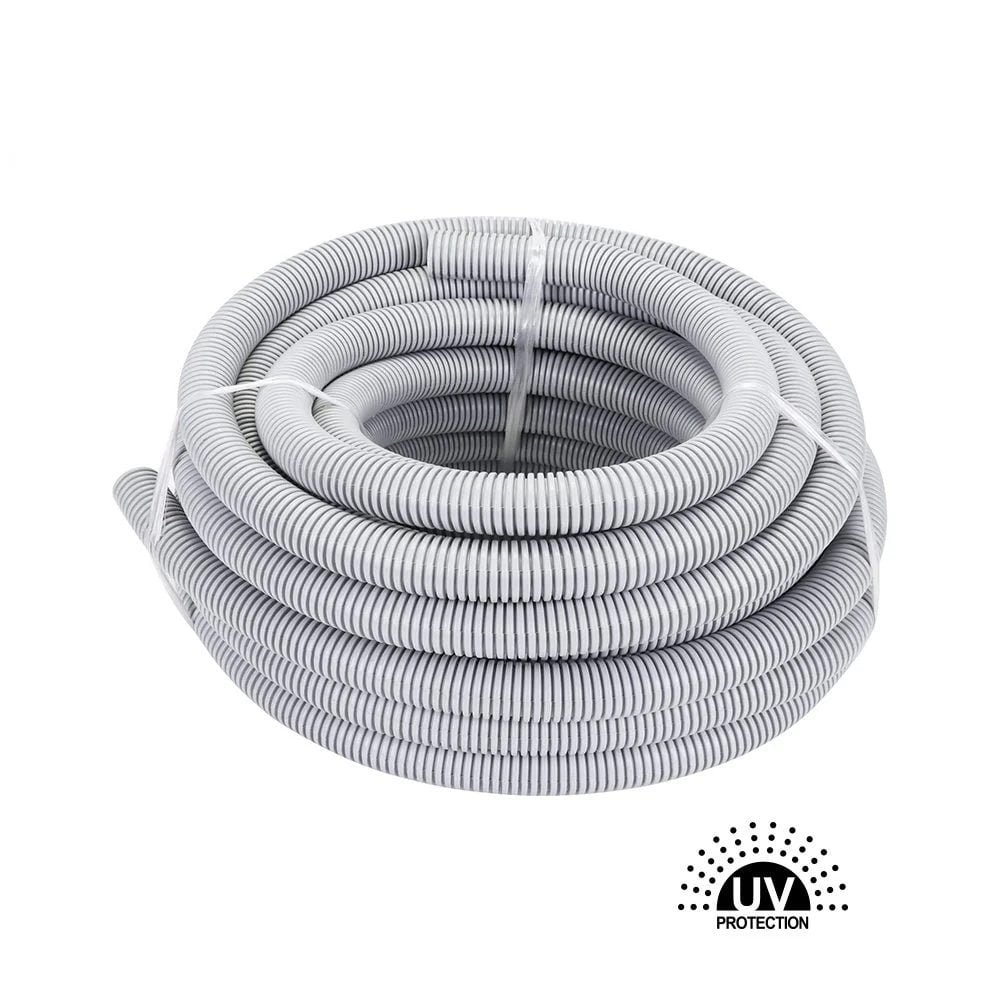Table of Contents
Toggle1. Introduction
In solar energy systems, the solar inverter is one of the most critical components. It plays an essential role in converting the direct current (DC) power generated by solar panels into alternating current (AC) power, which can then be used to power your home or business. Choosing the right solar inverter size is crucial, as it directly influences the efficiency, performance, and overall energy production of the entire system. This article aims to provide a comprehensive guide on how to select the proper solar inverter size for your system, helping you make an informed decision based on your unique energy needs.
1.1 Overview of Solar Inverters
Solar inverters are electrical devices that convert the DC electricity produced by solar panels into usable AC electricity. Since most homes and appliances run on AC power, inverters are essential for integrating solar energy into the grid or for use in off-grid solar systems. Without a properly sized inverter, your solar system would either underperform or be inefficient.

There are different types of solar inverters available, each suited to specific system configurations and energy needs:
String Inverters: The most common type, typically used in residential and commercial solar installations. They connect multiple solar panels in series, and the DC power from all panels flows into one inverter for conversion into AC power.
Microinverters: These are smaller inverters placed directly on each solar panel, allowing each panel to operate independently. Microinverters maximize energy production by ensuring each panel performs at its optimal capacity, even if one panel is shaded or malfunctioning.
Power Optimizers: A hybrid solution, power optimizers are used in conjunction with string inverters. They improve the performance of each solar panel individually by maximizing its power output before the energy is converted by the central inverter.
Each type of inverter offers different advantages, such as cost, efficiency, and monitoring capabilities. The choice of inverter type depends on factors like the layout of your solar array, your budget, and the level of system monitoring you desire.
Here we have published a post to introduce the different types of inverter for a reference.
1.2 Importance of Choosing the Right Inverter Size
The size of the solar inverter is directly tied to the performance of your solar system. Choosing the right inverter ensures that your solar system operates at peak efficiency, providing the maximum possible energy output while minimizing losses.
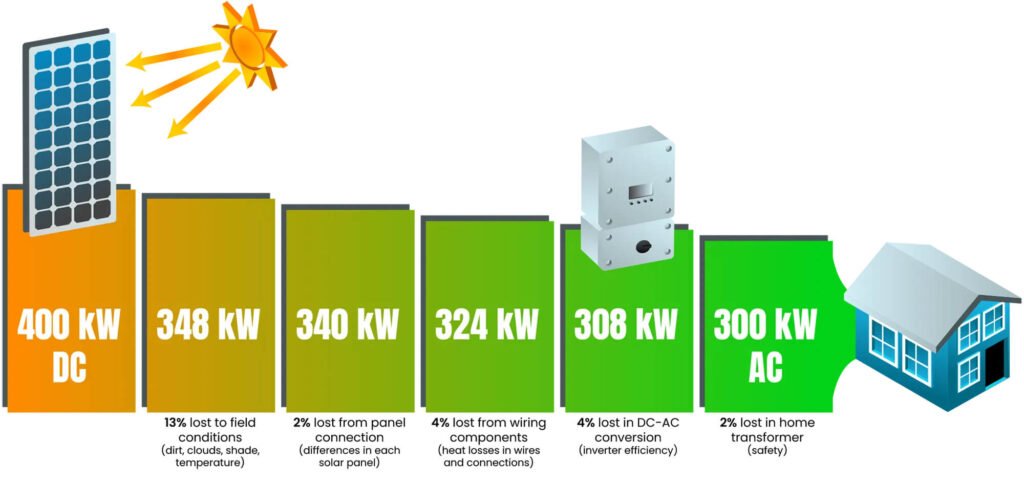
System Efficiency: An undersized inverter will not be able to handle the energy output of the solar panels during peak sunlight hours. This can result in energy production losses, as the inverter will not be able to process all the DC electricity generated. On the other hand, an oversized inverter may result in wasted energy, as it may not be used to its full capacity.
Maximum Power Point Tracking (MPPT): Inverters are equipped with MPPT technology to ensure that solar panels operate at their maximum power point, adjusting for variations in sunlight and temperature. If the inverter size is mismatched with the array size, it may hinder the MPPT’s ability to work efficiently, reducing the overall output of the system.
Long-Term Performance: Overloading an inverter can shorten its lifespan. An undersized inverter that is forced to operate at full capacity for extended periods can overheat or experience other technical failures. A properly sized inverter ensures the system operates smoothly over the long term, maintaining consistent performance and reliability.
Energy Production: When correctly sized, the inverter can handle the full output of the solar panels, ensuring that the energy generated is efficiently converted and used. This leads to higher energy savings and potentially lower electricity bills, maximizing the return on investment for your solar energy system.
1.3 Key Terms: Oversizing, Undersizing, DC Rating, AC Output
Understanding some key terms related to inverter sizing will help to the choices making.

Oversizing: This refers to installing a solar array that has a larger capacity than the inverter’s maximum output. While this might seem inefficient at first glance, it is a common practice to improve performance. In most cases, solar panels generate less power than their rated capacity, so oversizing the array can lead to a more efficient inverter operation throughout the day, especially during peak sunlight hours.
Undersizing: In contrast to oversizing, undersizing means using an inverter with a higher capacity than necessary for the solar array. While this might provide extra capacity for future system expansions, it often results in inefficiency, particularly during off-peak hours or in low sunlight conditions, as the inverter may not fully utilize its potential.
DC Rating: The DC rating of a solar panel or system refers to its maximum direct current output. This is typically higher than the actual output that the system will generate during regular operation. Understanding the DC rating is essential for sizing the inverter because it tells you the maximum amount of power the inverter should be capable of handling.
AC Output: The AC output is the amount of alternating current that the inverter generates to power your home. This is the number to consider when sizing the inverter, as it indicates how much electrical output the system can provide for your household’s needs.
The purpose of this post is to provide a step-by-step guide on how to select the right inverter size for your solar energy system. Whether you’re installing solar panels for the first time or upgrading an existing system, understanding how to size your inverter properly is essential for maximizing performance and ensuring long-term reliability.
2. Factors to Consider When Sizing a Solar Inverter
Choosing the right solar inverter size requires a deep understanding of various factors that influence the efficiency, performance, and durability of the solar system. The inverter is a key component that must be carefully matched to the characteristics of your solar array, location, and energy needs. Below are the critical factors to consider when selecting the correct inverter size for your solar power system.
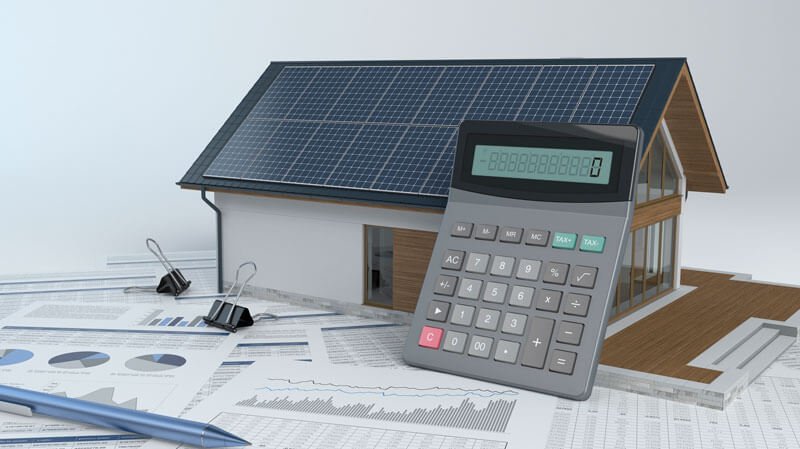
2.1 System Size (DC Power Output)
The DC power output of your solar array is perhaps the most fundamental factor in determining the appropriate size for your inverter. The inverter must be capable of handling the power produced by your solar panels. The total DC power output is calculated by multiplying the wattage rating of each solar panel by the number of panels in your system.
How to Calculate System Size:
To calculate the total system wattage, simply multiply the wattage rating of a single panel by the number of panels in your system. For example, if you have 20 solar panels, each rated at 300 watts, the total DC power output of your system will be:
- 20 panels x 300 watts/panel= 6000 watts(6kW)

Inverter Sizing Rule of Thumb:
Typically, inverters are sized to handle about 80-90% of the total DC output from the solar array. This allows for an effective conversion process while accounting for fluctuations in the amount of energy being produced. Therefore, in the above example, a good choice of inverter would be one rated at around 5.4-5.8 kW. This sizing strategy ensures that the inverter is not oversized or undersized, optimizing both performance and longevity.
However, some systems may be slightly oversized to account for temporary spikes in energy production during peak sunlight hours. This is particularly true in regions with high solar irradiance.
2.2 Optimal Inverter Sizing: The General Rule of Thumb
Key Points about Array-to-Inverter Ratio
The array-to-inverter ratio, also known as the DC-to-AC ratio, refers to the relationship between the total wattage of the solar panel array (DC output) and the capacity of the inverter (AC output). This ratio helps ensure that the inverter is appropriately sized to handle the power output from the solar panel.
Array-to-Inverter Ratio Formula
- Array-to-Inverter Ratio= Total DC Power (kw) / Inverter AC Power (kW)
For example, if you have an array of solar panels producing 8 kW of DC power and you are using a 6 kW inverter, the array-to-inverter ratio would be:
- Array-to-Inverter Ratio = Array-to – Ratio = 8kw / 6kw = 1.33
In most solar systems, a DC-to-AC ratio of 1.2 to 1.5 is considered optimal. This means that for every 1 kW of AC output from the inverter, the solar array can produce 1.2 kW to 1.5 kW of DC power.

Common Array-to-Inverter Ratios
- 1.0 to 1.2: Suitable for systems where maximizing inverter capacity is crucial, and minimal clipping is acceptable.
- 1.2 to 1.5: Common for many residential systems, offering a balance between energy production and system cost-efficiency.
- >1.5: Can lead to excessive inverter clipping if the array is much larger than the inverter, although it might still work for optimal performance in ideal conditions.
- If the ratio is too high (oversizing): The inverter will not be able to handle the full capacity of the array, leading to wasted energy.
- If the ratio is too low (undersizing): The inverter may not be able to convert all of the power produced by the array, leading to inefficiencies and possible system downtime.
Factors Affecting the Optimal Ratio
Geographic Location and Sunlight Exposure: Areas with more sunlight hours or higher solar irradiance may benefit from a slightly higher ratio (closer to 1.5). This helps to maximize the power generated during those sunny days.
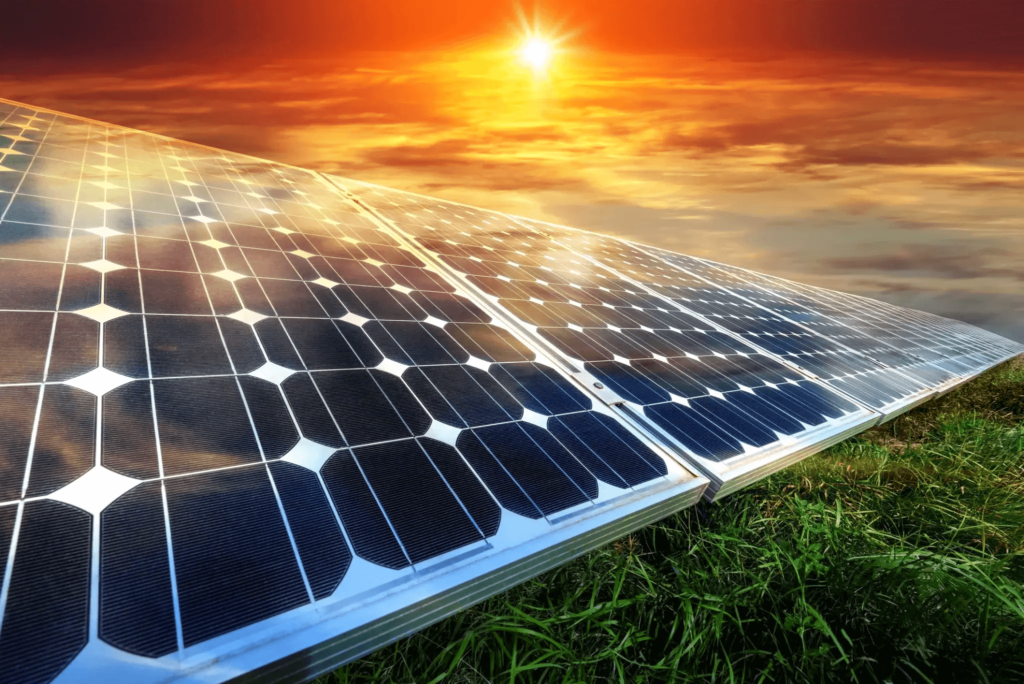
Panel Degradation: Over time, solar panels degrade and produce less energy. Inverter sizing can account for this gradual reduction in output by choosing an inverter that can handle potential future lower production, without needing an immediate upgrade.
Inverter Efficiency: Different inverter models have varying levels of efficiency. Higher efficiency inverters may allow for a slightly higher DC-to-AC ratio without sacrificing performance.
2.3 Panel Wattage
The wattage of each individual solar panel directly influences the amount of energy the system generates, which, in turn, determines the inverter’s capacity. Higher-wattage panels generate more energy, meaning the inverter must be capable of processing this additional power.

Impact of Panel Wattage on Inverter Size:
Panels come in various wattage ratings, typically ranging from 250W to over 400W for modern solar panels. For example, if you are using 400W panels, the total output of a system with 20 panels would be:
- 20 panels x 400 watts/panel=8000 watts(8kW)
If you were to use a 250W panel, the system output would be:
- 20 panels x 250 watts/panel= 5000 watts(5kW)
The inverter must be able to handle the maximum output of your solar array. Higher-wattage panels mean the inverter needs to be sized accordingly to process the increased energy. However, just like with the system size, it is important to avoid oversizing the inverter excessively, as this may cause inefficiency in energy conversion.
2.4 Location and Solar Irradiance

Geographic location and the amount of sunlight your solar panels receive play a significant role in determining the right inverter size. Solar irradiance is a measure of the sunlight power received per unit area, and it varies based on geographic factors such as latitude, altitude, time of year, and weather patterns.
Understanding Solar Irradiance: Regions that experience more sunlight, such as deserts or coastal areas, have higher solar irradiance values. In contrast, areas that are frequently cloudy or experience shorter daylight hours will have lower solar irradiance. This affects the total energy produced by the solar panels and the inverter’s performance.
High Irradiance Areas: In regions with high solar irradiance, solar panels generate more power, especially during peak sunlight hours (usually around midday). For example, in places like Arizona or southern California, a 5 kW system could generate more power than the same system would in a cloudier region. Therefore, an inverter sized to handle higher-than-average output would be needed.
Low Irradiance Areas: If you live in a region with less solar irradiance (e.g., areas with frequent cloud cover or northern latitudes), the panels will produce less power overall. In this case, an inverter may be slightly undersized to accommodate the lower power output of the solar array without wasteful over-sizing.
Temperature Considerations: Temperature can significantly affect both the performance of solar panels and inverters. Higher temperatures can reduce the efficiency of both, causing power losses. For every 1°C rise above the standard test conditions (STC), solar panels typically lose about 0.5% of their efficiency. In hot climates, you may need to account for this reduction by slightly increasing the inverter capacity to handle the reduced output.
2.5 Desired Efficiency and Performance
Efficiency refers to the inverter’s ability to convert the energy produced by the solar panels into usable electricity. Inverters have varying levels of conversion efficiency, typically in the range of 95-98%, meaning a small percentage of the energy will be lost during conversion.

Maximum Power Point Tracking (MPPT) Efficiency: As we mentioned above (1.2 Importance of Choosing the Right Inverter Size
), MPPT is a technology used by inverters to adjust the operating point of the solar panels in real-time, maximizing energy capture. Some inverters have multiple MPPT channels, which can optimize energy conversion when there are shading issues or if the panels are facing different directions. In systems with large arrays, MPPT technology ensures that energy is captured as efficiently as possible.
Conversiona Efficiency: Inverter conversion efficiency is crucial because it determines how much of the DC power is successfully converted into AC power. Most inverters today offer efficiencies of around 97-98%. Choosing an inverter with a higher conversion efficiency will reduce energy loss, making your system more effective in generating usable power.
Performance Under Load: A properly sized inverter will perform at peak efficiency under most conditions. However, if you select an inverter that is too large or too small, its performance can degrade, leading to energy loss. An inverter that is too large will not operate efficiently, particularly during periods of low solar output, and may waste energy as heat. Conversely, a small inverter will be overworked and may struggle to handle the total output, reducing its efficiency.
2.6 Safety Margin
It’s essential to size your inverter with a safety margin to ensure that it can handle occasional power surges or spikes in energy production. While it’s tempting to size an inverter to match the exact power output of your solar system, this can lead to inefficiencies, especially during peak sunlight hours.

Power Surges: During sunny days, solar panels may briefly produce more power than expected. For example, if cloud cover suddenly dissipates, the panels may experience a spike in energy production. A safety margin allows the inverter to handle these temporary surges in power without risking overheating or damage.
Overproduction and Excess Energy: If your solar panels produce more energy than the inverter can handle, the excess energy will be lost unless you have a larger inverter or a system designed to handle this overproduction. A 10-20% safety margin is often used to prevent the inverter from being overloaded during peak production periods.
Future System Expansion: If you plan to add more solar panels in the future, sizing the inverter slightly larger than the current array size can help accommodate expansion without needing to replace the inverter later. This margin helps ensure that the inverter will still be capable of handling the increased capacity.
3. Common Sizing Mistakes to Avoid
Choosing the right inverter size is crucial for optimizing your solar energy system’s performance and ensuring long-term efficiency. While it’s easy to focus on just the initial cost or power output, several common mistakes can impact your system’s performance, longevity, and ROI. Below are some of the key mistakes to avoid when sizing your solar inverter.

3.1 Undersizing the Inverter
Undersizing an inverter can seem like a way to save costs, but it can lead to significant issues that may affect system performance and energy production.
Inability to Handle Peak Loads: If the inverter is undersized for the number of solar panels or the power requirements of the system, it may not be able to handle the maximum energy production at peak sunlight. This results in energy clipping, where the inverter is unable to convert all the available power from the solar panels. The excess energy is essentially wasted.
Reduced System Efficiency: An undersized inverter will often operate at less than optimal efficiency because it is frequently overloaded. The system may not be able to convert energy efficiently during high-power production periods, leading to overall system inefficiency.
Shortened Lifespan: Continuous overloading of an undersized inverter can also lead to overheating, causing potential damage to internal components and reducing the lifespan of the inverter.
Underperformance During Low Light Conditions: In some cases, an undersized inverter may not even fully utilize the available solar energy during the day, especially during low light conditions, because it’s not capable of converting the lower power output effectively.
3.2 Oversizing the Inverter
While it may seem like a good idea to invest in a larger inverter to ensure you can handle future energy demands, oversizing can lead to its own set of problems.

Higher Initial Cost: Oversizing the inverter results in a higher upfront investment. Larger inverters tend to be more expensive, and unless the system is consistently producing at the maximum capacity of the oversized inverter, you’re paying for unused capacity.
Inefficient Energy Conversion: When an inverter is too large for the solar array, it may not operate efficiently at lower power levels. Inverters perform best within certain load ranges, so when the energy produced is below the inverter’s rated capacity, conversion losses increase, leading to lower efficiency.
Unnecessary Energy Losses: A larger inverter may end up wasting energy during off-peak periods, where the solar array does not generate enough power to justify the inverter’s full capacity. The system may have to work harder than necessary, reducing overall performance and efficiency.
Increased Ongoing Costs: An oversized inverter can also lead to higher maintenance and operating costs over time, as it may require more energy to operate and may not operate as efficiently at low load factors.
3.3 Clipping Phenomenon
The most immediate risk of undersizing a solar inverter is the phenomenon of clipping, where the inverter is unable to convert all of the energy generated by the solar array into usable AC power. When the solar panels generate more electricity than the inverter can handle, the excess energy is effectively wasted.

Clipping occurs during periods of peak sunlight when the solar array is producing its maximum power output. If the inverter is undersized, the system will not be able to convert this surplus energy, and it will be lost. While this may not seem like a huge issue for occasional peak periods, it can result in significant energy loss over the life of the system.
3.4 Ignoring Environmental Factors
Environmental factors such as temperature variations, dust, and shading can significantly impact your solar system’s performance. When sizing the inverter, failing to consider these factors may result in poor system performance and unexpected issues.

3.4.1 Temperature Variations
Heat Impact: Solar inverters are sensitive to temperature. Higher temperatures can cause inverters to overheat and perform poorly. If you live in a hot climate, selecting an inverter with a higher temperature tolerance or designing the system with proper ventilation can help prevent overheating. Oversized inverters, for example, may struggle more in high-heat environments, as they may consume more energy to maintain performance.
Cold Weather: Inverters also have to function well in colder conditions. In some regions, extreme cold may reduce an inverter’s ability to perform efficiently. It’s important to choose an inverter rated for the local temperature range.
3.4.2 Dust and Debris
In areas prone to dust and debris, inverters and solar panels can become dirty more quickly, leading to a decrease in system efficiency. If the inverter’s ventilation system becomes blocked by dust, it may overheat. Oversized systems may exacerbate these problems by demanding more energy and increasing the likelihood of overheating in such conditions.
3.4.3 Shading
Partial Shading: If your solar panels are partially shaded during the day (due to trees, buildings, or other obstacles), an oversized inverter may still try to perform at full capacity, even though it’s receiving less energy than it expects. This can result in wasted energy and inefficiency.
Microinverters or Power Optimizers: If shading is a concern, it might be better to use microinverters or power optimizers instead of one large string inverter. These devices can mitigate the effects of shading and ensure more consistent energy output, reducing the risk of inefficiency.
3.5 Failing to Account for Future Expansion
When sizing an inverter, it’s essential to consider whether you plan to expand your system in the future by adding more solar panels or energy storage. Not leaving room for expansion can lead to additional costs and hassle later on.
Future-Proofing: If you choose an inverter that’s too small, you may not have the option to add more panels without upgrading the inverter. Likewise, if the inverter is already operating at full capacity, adding more panels could lead to inefficiency, overload, or system failure.
Hybrid and Modular Inverters: To avoid this problem, consider selecting modular inverters or hybrid inverters that allow for easy scalability. Modular systems can be expanded by adding extra inverters or batteries as your energy needs grow over time. This way, you can expand the system without needing a complete overhaul.
Consider Energy Storage: If you plan to integrate battery storage into your system, choose an inverter that can easily accommodate batteries, which would allow you to store excess energy produced during the day for use at night or during periods of low sunlight. Hybrid inverters are ideal for this, as they are designed to handle both solar energy generation and storage simultaneously.
4. Choosing the Right Inverter for Your Needs
4.1 Residential vs. Commercial Systems

The inverter needs for residential and commercial solar systems differ significantly due to variations in size, power demands, and system complexities.
Residential Systems/ Smaller Scale: Residential systems typically range from 1 kW to 10 kW in size, with most homes using between 10 to 40 solar panels. Residential inverters are generally designed to handle the power production of a smaller array, and their sizing is often based on the energy consumption of the household.
Commercial Systems/ Larger Scale: Commercial solar installations range from 10 kW to several megawatts, and can require more robust, scalable inverters to handle the larger energy loads. Commercial systems often involve arrays of hundreds or thousands of panels, creating a greater demand for efficient and powerful inverters.
4.2 Size of Your Solar System
The size of your solar system is one of the first and most important factors to consider when choosing the right inverter. A solar system’s size is typically measured in terms of its DC rating (direct current), which is the total power output of the solar panels under optimal sunlight conditions.

The inverter’s size should always be in sync with the solar array’s DC rating. The most common sizing approach is to choose an inverter with an AC output between 80% and 130% of the DC rating, depending on factors such as efficiency, budget, and performance goals.
4.3 Amount of Sunlight in Your Region
The amount of sunlight your region receives directly affects how much energy your solar panels can generate. If you live in an area with abundant sunshine, your system may generate more power, and you may consider opting for a slightly larger inverter to maximize this potential.

High Sunlight Areas: In regions with high solar irradiance (e.g., sunny desert climates), you may want an inverter that can handle higher inputs from your panels during peak sunlight hours.
Low Sunlight Areas: In locations with frequent cloud cover or shorter days (e.g., northern latitudes), you may consider opting for a smaller inverter to avoid excessive clipping during periods of peak solar output.
4.4 Network Operator Requirements
The climate and positioning of your solar system play an important role in determining the appropriate size and type of inverter. Extreme temperature fluctuations, humidity, and exposure to environmental elements can impact both the performance of your solar panels and the inverter.
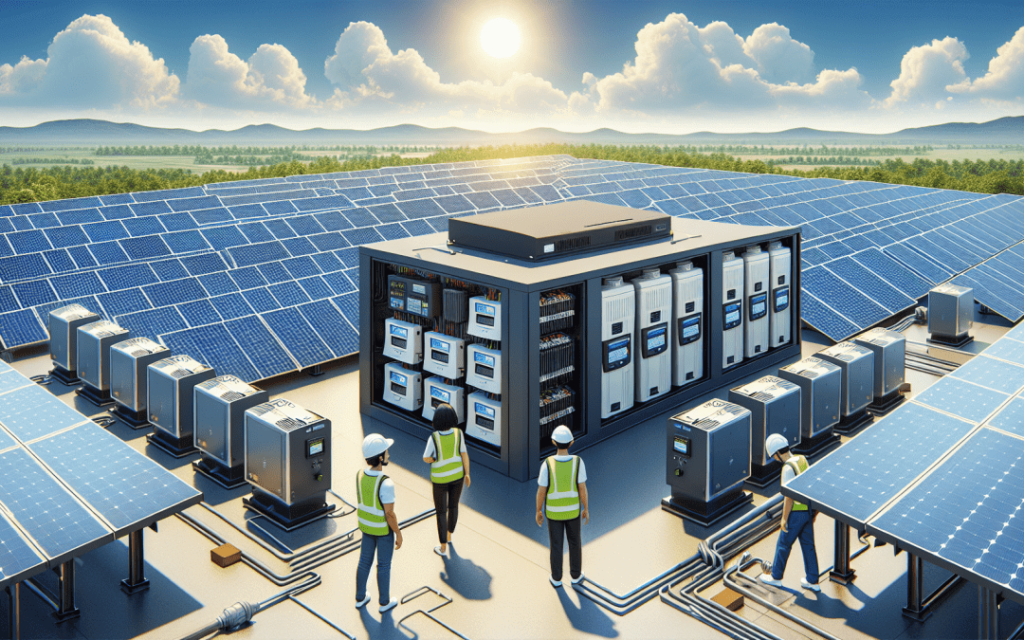
Temperature Sensitivity: Inverters are sensitive to temperature variations. Operating in very hot climates may require an inverter designed to handle high ambient temperatures. Conversely, cold climates may require inverters with built-in temperature compensation features to maintain optimal performance.
Inverter Placement: Inverters should be placed in a well-ventilated area that isn’t exposed to direct sunlight. Overheating can lead to inefficient operation and even damage. Also, if your panels are tilted or oriented differently, you may need an inverter with higher tolerance to variable output.
4.5 Grid-Connected vs. Self-Consumption Systems
The type of solar system you’re installing—whether grid-connected or designed for self-consumption—will influence your inverter sizing decision.
Grid-Connected Systems: If your solar system is grid-connected, you’re likely to be using a grid-tied inverter, which can either export excess electricity to the grid or draw power from it when needed. In these systems, the inverter needs to be sized based on the amount of energy you want to feed into the grid.
Self-Consumption Systems: For off-grid or self-consumption systems, the inverter needs to be sized to meet the household’s or facility’s energy demands directly. It’s more important here to ensure that the inverter can handle the maximum expected load during peak energy consumption times.
5. Conclusion
In conclusion, selecting the right size inverter is essential to maximizing your solar system’s efficiency, performance, and cost-effectiveness. By carefully considering factors such as the size of your solar array, your location’s sunlight exposure, and regulatory requirements, you can ensure that your solar system is optimized for both maximum output and long-term reliability. Whether you’re just starting with solar or planning for future expansions, the right inverter size is a cornerstone of successful solar energy adoption.
When setting up a solar power system, solar conduit plays a pivotal role in ensuring that the electrical wiring is safely and effectively housed, particularly in outdoor or exposed environments. Solar conduit is used to protect and route the electrical cables that carry the power generated by solar panels to the inverter and, ultimately, to the electrical grid or battery storage system.

The main purpose of solar conduit is to ensure the safety, durability, and longevity of the electrical wiring. Given the outdoor, often harsh environments where solar panels are installed, the conduit needs to be resistant to UV rays, moisture, and temperature fluctuations.

Ctube is a leading manufacturer specializing in high-quality solar conduit products and matching conduit fittings, such as junction box, adaptable box, coupling and sweep bend and more. They are tailored to meet the demands of modern solar power systems. With years of expertise in producing durable, UV-resistant, and fire-rated conduits, Ctube provides top-tier solutions to ensure the safety, efficiency, and longevity of your solar installation.
If you have projects requirements, please contacts us.
Thanks for your reading, good luck with your projects.

FAQs
1. Can I upgrade my solar inverter later if I expand my system?
Yes, some inverters are modular or hybrid, allowing for easy upgrades. However, it’s best to plan for future expansion when selecting the initial inverter size to avoid costly replacements later on.
2. How do I know the right size inverter for my system?
The right size depends on the total wattage of your solar panels and your energy consumption. Typically, the inverter should match or slightly exceed the peak output of your solar array to ensure optimal energy conversion. An oversized inverter may lead to inefficiency, while an undersized one could limit performance.
3. Can an oversized inverter cause problems?
An oversized inverter can result in higher upfront costs, and it may lead to inefficiencies by operating below its optimal performance range. But in many practical situations, many people think that no danger in oversizing panels to inverters as long as inverter voltage input is not exceeded.

